When the bugle sounds at Churchill Downs and the gates burst open at the Kentucky Derby, one breed of horse has consistently proven its supremacy—the Thoroughbred. For nearly 150 years, these magnificent animals have captivated audiences with their speed, stamina, and heart, making the “Run for the Roses” and similar prestigious races their exclusive domain. But what exactly makes Thoroughbreds the undisputed champions of the racing world? Their dominance isn’t mere coincidence but rather the result of centuries of selective breeding, unique physiological advantages, and an inherent competitive spirit that sets them apart from all other equine breeds.
The Prestigious History of Thoroughbred Racing

Thoroughbred racing has deep historical roots dating back to 17th century England, where three foundation sires—the Byerley Turk, the Darley Arabian, and the Godolphin Arabian—were imported from the Middle East and bred with native English mares. This careful crossing created the foundation of what would become the Thoroughbred breed. The first formal races organized for these horses established the concept of “Thoroughbred racing” as a distinct sport. By the time the first Kentucky Derby was run in 1875, Thoroughbreds had already been established as the premier racing breed, with their lineages meticulously recorded in studbooks. This historical foundation laid the groundwork for a racing industry that would eventually span the globe, with the Kentucky Derby emerging as America’s premier racing event and a showcase for the breed’s exceptional abilities.
Superior Genetics: The Breeding Behind the Speed

The genetic makeup of Thoroughbreds represents one of the most successful selective breeding programs in human history. For over 300 years, breeders have focused exclusively on speed, stamina, and competitive drive, creating a genetic pool optimized for racing. Every modern Thoroughbred can trace its lineage back to those three foundation sires, creating a closed breeding population that has allowed for the concentration of speed-producing genes. Genetic studies have identified specific variants that contribute to their athletic ability, including the “speed gene” (MSTN), which affects muscle fiber composition and has been linked to optimal racing distance aptitude. Additionally, Thoroughbreds possess genetic markers associated with high aerobic capacity, efficient metabolism, and superior cardiovascular function. This careful genetic selection has resulted in animals purpose-built for racing, with approximately 97% of all Thoroughbreds possessing genetic markers for speed over stamina, explaining their continued dominance in events like the Kentucky Derby.
Physiological Advantages: Built for Speed
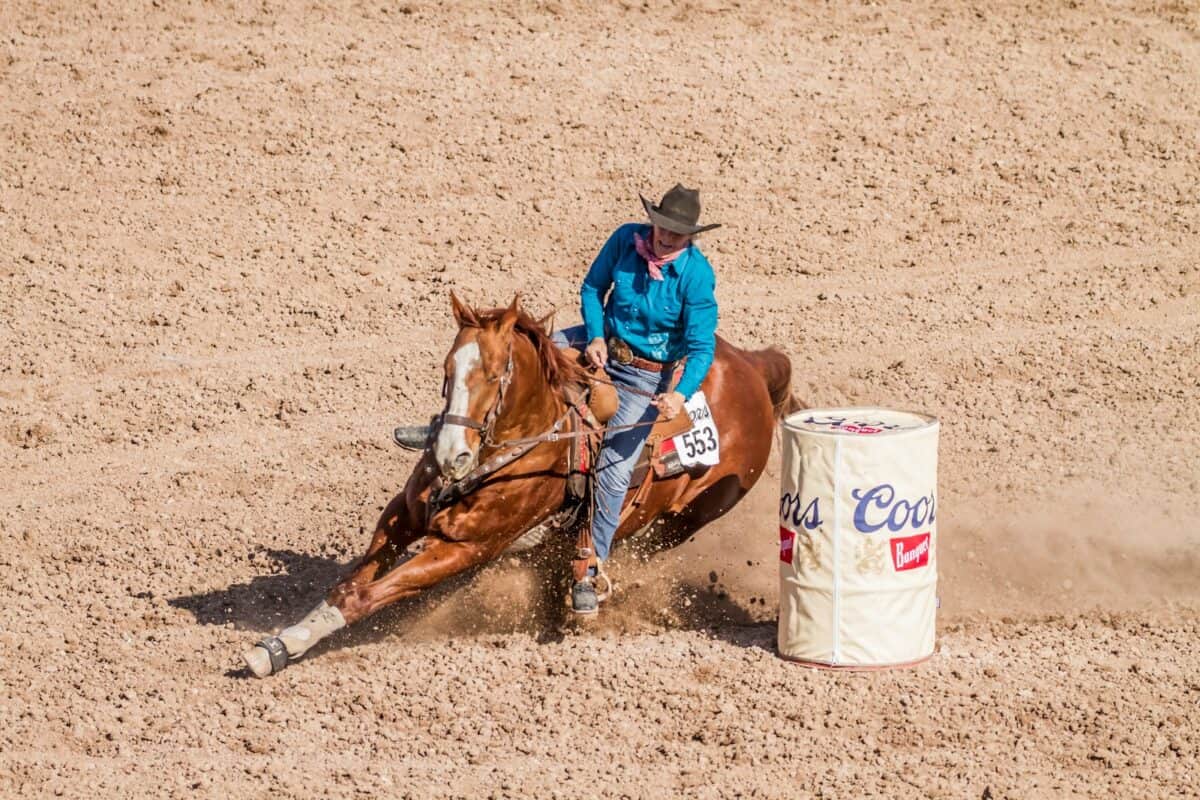
Thoroughbreds possess unique physiological characteristics that make them natural athletes. Their large hearts—sometimes weighing up to 10 pounds, nearly twice the size of an average horse’s heart—pump blood more efficiently, delivering oxygen-rich blood to muscles with remarkable effectiveness. This cardiovascular advantage is complemented by their large lung capacity, which allows for greater oxygen intake during intense exercise. Thoroughbreds typically have a higher concentration of fast-twitch muscle fibers than other breeds, enabling explosive acceleration and sustained speed. Their lean body composition, with less fat and more muscle than most horses, contributes to their efficiency of movement. Additionally, their long legs relative to body size create a longer stride—elite Thoroughbreds can cover more than 20 feet in a single stride when running at full speed. These physical attributes combine to create an animal capable of maintaining speeds of up to 40 miles per hour, making them perfectly adapted for the demands of races like the Kentucky Derby.
The Perfect Build: Anatomy of a Racing Machine

The Thoroughbred’s body structure represents the ideal conformation for speed and endurance. Standing typically between 15.2 and 17 hands high (approximately 5 to 5.7 feet at the shoulder), these horses possess a distinctive build characterized by a deep chest, long, sloping shoulders, and powerful hindquarters. Their streamlined bodies feature a high withers area that anchors their forelegs further back on their bodies compared to other breeds, creating a mechanical advantage for their stride. The angle of their shoulder and hip joints allows for maximum extension, contributing to their impressive stride length. Their relatively light bone structure, particularly in the lower legs, reduces the weight they must move with each stride, while their large, well-formed hooves provide the necessary foundation for balance and propulsion. This anatomical perfection is no accident—it’s the result of generations of selective breeding focused on creating the ultimate racing physique, one capable of the explosive power and sustained speed required to win prestigious races like the Kentucky Derby.
Early Development and Training Advantages
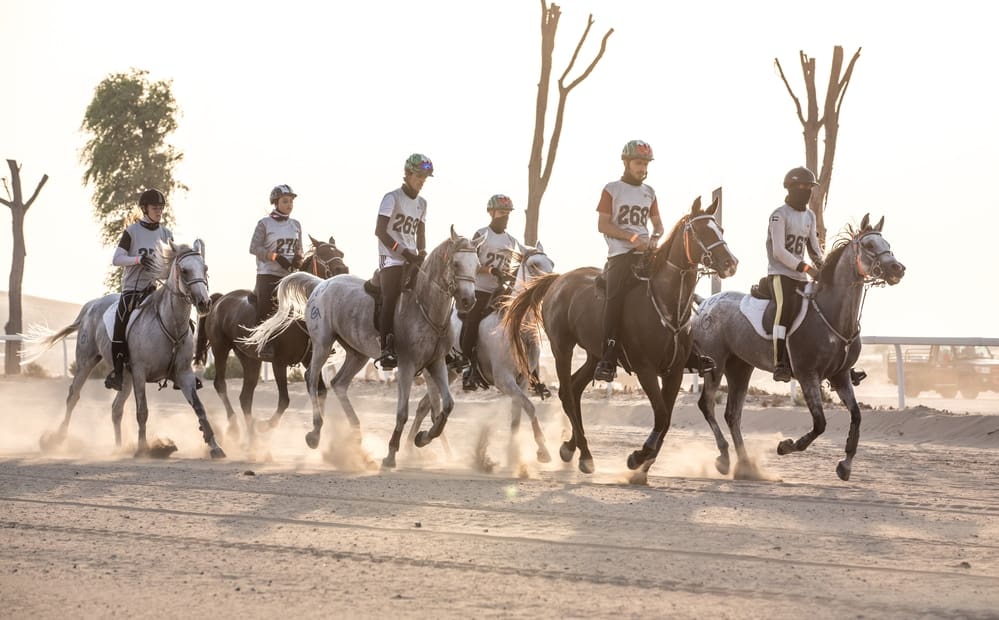
Unlike many horse breeds that mature slowly, Thoroughbreds develop remarkably quickly, allowing for earlier training and racing careers. By 18 months of age, most Thoroughbreds have reached approximately 90% of their adult height, though they continue to develop muscle and bone density for several more years. This early physical maturity allows them to begin race training at two years old, with many competing in their first races before their actual third birthday. The Kentucky Derby itself is restricted to three-year-olds, capturing these athletes at a prime developmental stage when they combine youthful energy with sufficient physical maturity. Thoroughbreds also possess a natural aptitude for learning race-specific behaviors, responding well to the intensive training regimens that prepare them for competition. Their early exposure to specialized training—including gate training, conditioning work, and practice races—creates muscle memory and racing instincts that serve them well in competitive environments. This combination of early physical development and specialized training gives Thoroughbreds a significant advantage over other breeds that typically develop more slowly or lack the generations of selection for trainability in racing contexts.
The Mental Edge: Competitive Spirit and Intelligence
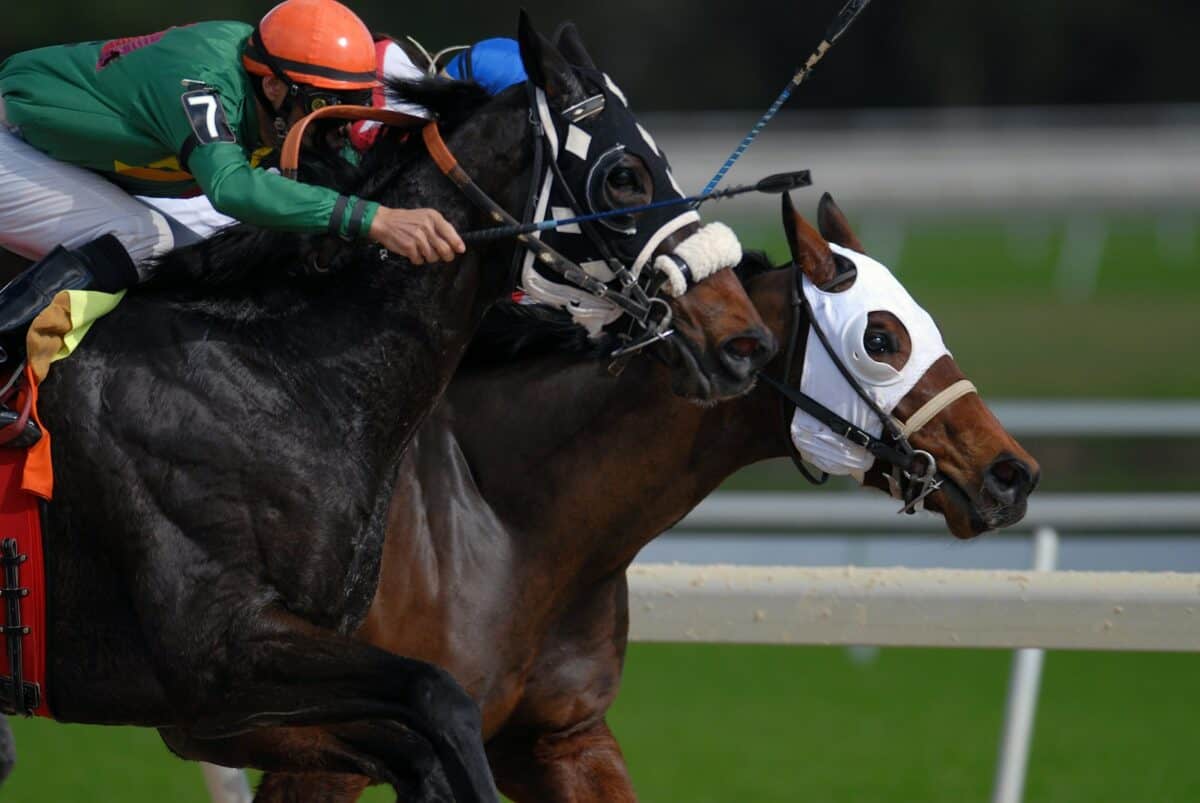
Beyond their physical attributes, Thoroughbreds possess a mental makeup ideally suited for racing competition. Generations of selective breeding have not only enhanced their physical capabilities but also selected for traits like competitiveness, focus, and determination. Many successful racehorses demonstrate a clear desire to win—a quality trainers often call “heart” or competitive spirit. This manifests as an observable will to pass other horses and maintain position at the front of the pack. Thoroughbreds generally exhibit high intelligence and sensitivity, allowing them to quickly comprehend the demands of racing and respond to subtle cues from their jockeys during the intense decision-making moments of a race. Their natural forward-thinking temperament, characterized by energy and eagerness, serves them well in the competitive environment of races like the Kentucky Derby, where split-second decisions and the ability to perform under pressure separate champions from the rest of the field. This combination of intelligence, sensitivity, and competitive drive complements their physical attributes to create the complete racing package.
Specialized Care: The Supporting Infrastructure

The dominance of Thoroughbreds in racing is further reinforced by the extensive infrastructure developed specifically for their care and optimization. These horses benefit from an unparalleled level of specialized attention, including customized nutrition plans developed by equine nutritionists that often cost upwards of $100 per day. Their healthcare regimens involve regular veterinary care from specialists in equine sports medicine, advanced diagnostic technologies like digital radiography and MRI, and preventative treatments that can exceed $25,000 annually for top competitors. Training facilities designed exclusively for Thoroughbreds feature specialized surfaces engineered to maximize performance while minimizing injury risk, climate-controlled environments, swimming pools for low-impact conditioning, and high-speed treadmills for controlled exercise. Additionally, the development of custom equipment—from aerodynamic racing plates weighing less than 4 ounces to ergonomically designed saddles—further enhances their natural abilities. This comprehensive support system, representing billions of dollars in investment across the industry, gives Thoroughbreds advantages unavailable to other breeds and contributes significantly to their continued racing supremacy at events like the Kentucky Derby.
Economic Factors: Investment and Reward

The economic structure of Thoroughbred racing creates a self-reinforcing cycle that maintains their dominance in premier racing events. With yearling prices at elite auctions regularly exceeding $300,000 and top prospects commanding millions—the record standing at $16 million for a single yearling—the financial investment in Thoroughbreds dwarfs that of any other equine competition. This massive financial commitment incentivizes breeders to continue refining the breed for optimal racing performance. The purse structure of major races further reinforces this dynamic, with the Kentucky Derby offering a purse of approximately $3 million and the winner taking home about $1.86 million. Beyond race winnings, successful Thoroughbreds command extraordinary value as breeding stock, with top stallions earning stud fees exceeding $200,000 per mating and potentially serving 150-200 mares annually. This economic ecosystem channels substantial resources toward the continued improvement of Thoroughbred racing stock, creating a virtuous cycle where increased investment leads to better performance, which in turn attracts more investment. The result is a breed that receives unparalleled resources toward its development as the ultimate racing machine, effectively excluding other breeds from meaningful competition at the highest levels.
Regulatory Frameworks: Rules That Favor Thoroughbreds
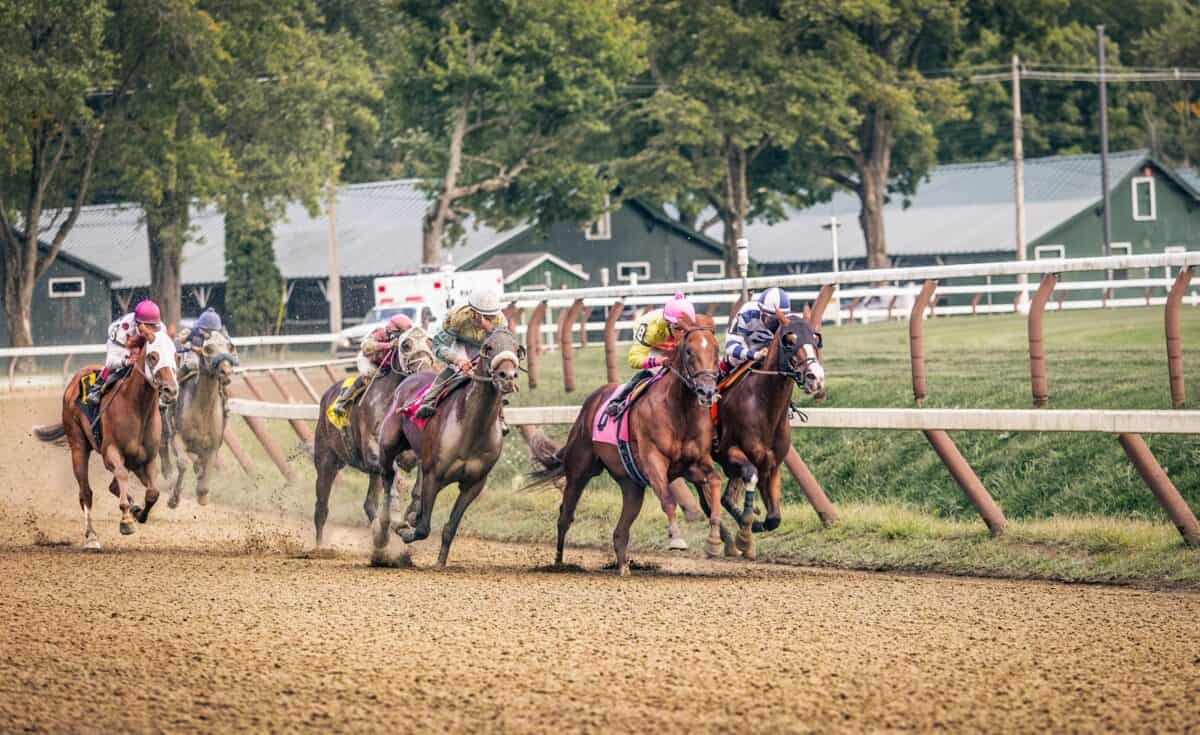
The regulatory structure of prestigious racing events like the Kentucky Derby explicitly maintains Thoroughbred dominance through strict eligibility requirements. The Jockey Club, founded in 1894, maintains the American Stud Book, which serves as the official registry for all Thoroughbreds in the United States. To compete in the Kentucky Derby and other races sanctioned by the Jockey Club, horses must be registered Thoroughbreds with documented pedigrees tracing to the original studbook. These requirements effectively create a closed competitive ecosystem where non-Thoroughbreds are excluded by definition rather than performance. Additionally, the handicapping systems, race distances, and track designs of major racing events have all evolved specifically around Thoroughbred capabilities, creating a regulatory environment perfectly tailored to their strengths. Weight assignments, starting procedures, and even drug testing protocols are designed with Thoroughbred physiology as the baseline. This regulatory framework, while ensuring the integrity of the sport, also solidifies the position of Thoroughbreds as the exclusive participants in premier racing events, regardless of whether other breeds might potentially compete effectively under different rules or conditions.
Global Dominance: Beyond the Kentucky Derby
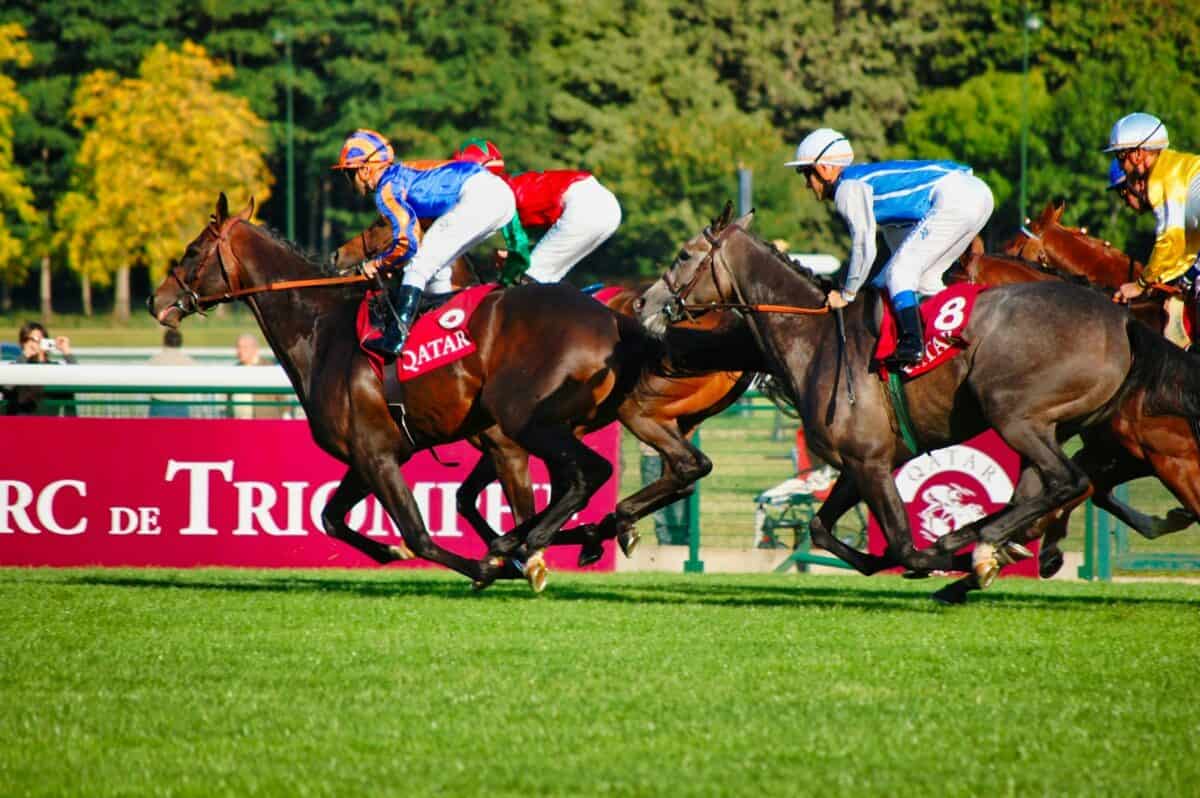
While the Kentucky Derby represents American racing’s most prestigious event, Thoroughbred dominance extends to elite racing competitions worldwide. From Royal Ascot in England to the Prix de l’Arc de Triomphe in France, the Melbourne Cup in Australia to the Dubai World Cup, Thoroughbreds reign supreme across diverse racing cultures, distances, and track conditions. This global dominance demonstrates their versatility and adaptability to different racing environments. The international breeding and racing operations have created distinct regional lines of Thoroughbreds with specialized attributes—European Thoroughbreds often excel at longer distances and turf courses, while American lines typically demonstrate superior speed on dirt tracks. Despite these regional variations, all maintain the core Thoroughbred characteristics that make them superior racers. The international exchange of breeding stock has accelerated in recent decades, creating a truly global gene pool that continuously refines the breed’s racing capabilities. This worldwide infrastructure of Thoroughbred racing, with annual wagering exceeding $100 billion globally, reinforces their position as the undisputed kings and queens of horse racing across all major competitions, not just the Kentucky Derby.
Historical Performance: The Numbers Don’t Lie

The statistical record of Thoroughbred performance at the Kentucky Derby and similar events provides compelling evidence of their racing superiority. Since the Derby’s inception in 1875, the winning time has improved dramatically, from Aristides’ 2:37.75 in the inaugural race to the current record of 1:59.40 set by Secretariat in 1973—an improvement of over 38 seconds. This progression reflects the continuous genetic improvement of the breed through selective breeding. Thoroughbreds regularly achieve sustained speeds of 35-40 mph during races, with brief bursts reaching up to 45 mph. Their documented performance in other physiological measures is equally impressive, with elite Thoroughbreds registering maximum heart rates of 240 beats per minute during peak exertion and oxygen consumption rates (VO2 max) approximately 160 ml/kg/min—more than double that of human elite athletes. Stride analysis reveals that champion Thoroughbreds typically maintain stride rates of 130-140 strides per minute while covering 20-24 feet per stride at racing speeds. These quantifiable performance metrics demonstrate why Thoroughbreds consistently outperform all other breeds in timed competition and why alternative breeds simply cannot match their racing capabilities under standard race conditions.
Challenges to Dominance: Could Other Breeds Compete?

Despite the overwhelming Thoroughbred presence in elite racing, occasional challenges to their dominance have emerged through comparative racing events and scientific studies. Quarter Horses, known for their explosive speed over short distances, can outpace Thoroughbreds in races shorter than a quarter mile, reaching speeds up to 55 mph in brief sprints. However, their muscle composition favors anaerobic performance, limiting their effectiveness at the Derby’s 1¼ mile distance. Arabian horses, renowned for their endurance, possess greater stamina than Thoroughbreds over extreme distances exceeding 50 miles but lack the raw speed necessary for conventional track racing. Scientific comparisons of equine athleticism across breeds indicate that Standardbreds (used in harness racing) demonstrate comparable cardiovascular capacity to Thoroughbreds but different gait mechanics that result in lower overall speed when running without harness. Some research suggests that Akhal-Tekes, an ancient breed from Central Asia with similar desert ancestry to Thoroughbreds’ Arabian forebears, might potentially compete effectively if given equal training opportunities and selection pressure for racing traits. However, without the centuries of specialized breeding and vast economic infrastructure supporting them, no breed currently approaches the Thoroughbred’s optimized combination of speed and stamina for races like the Kentucky Derby.
The Future of Racing: Will Thoroughbred Dominance Continue?

The future of Thoroughbred racing appears secure despite evolving challenges facing the industry. Advances in genetic science, including the mapping of the equine genome in 2007, are providing breeders with new tools to identify potential champions earlier and make more informed breeding decisions. Technologies like CRISPR gene editing raise both possibilities and ethical questions about the potential for genetic enhancement, though strict regulation currently prohibits such interventions in registered Thoroughbreds. Artificial reproductive technologies, while limited by racing registry restrictions, continue to advance, potentially allowing for greater dissemination of elite genetics. These scientific developments suggest that Thoroughbred performance may continue to improve incrementally, though the most significant gains in speed were achieved during the 20th century. Challenges to the industry include increased scrutiny of animal welfare practices, declining attendance at race events, and competition from other forms of entertainment and gambling. However, the deep cultural significance of events like the Kentucky Derby, combined with the massive economic infrastructure supporting Thoroughbred racing, suggests that the breed’s dominance will continue for the foreseeable future. As racing evolves to address contemporary concerns, the Thoroughbred’s position as the premier racing breed appears unlikely to face any serious challenge from alternative breeds.
Conclusion: The Unrivaled Racing Royalty
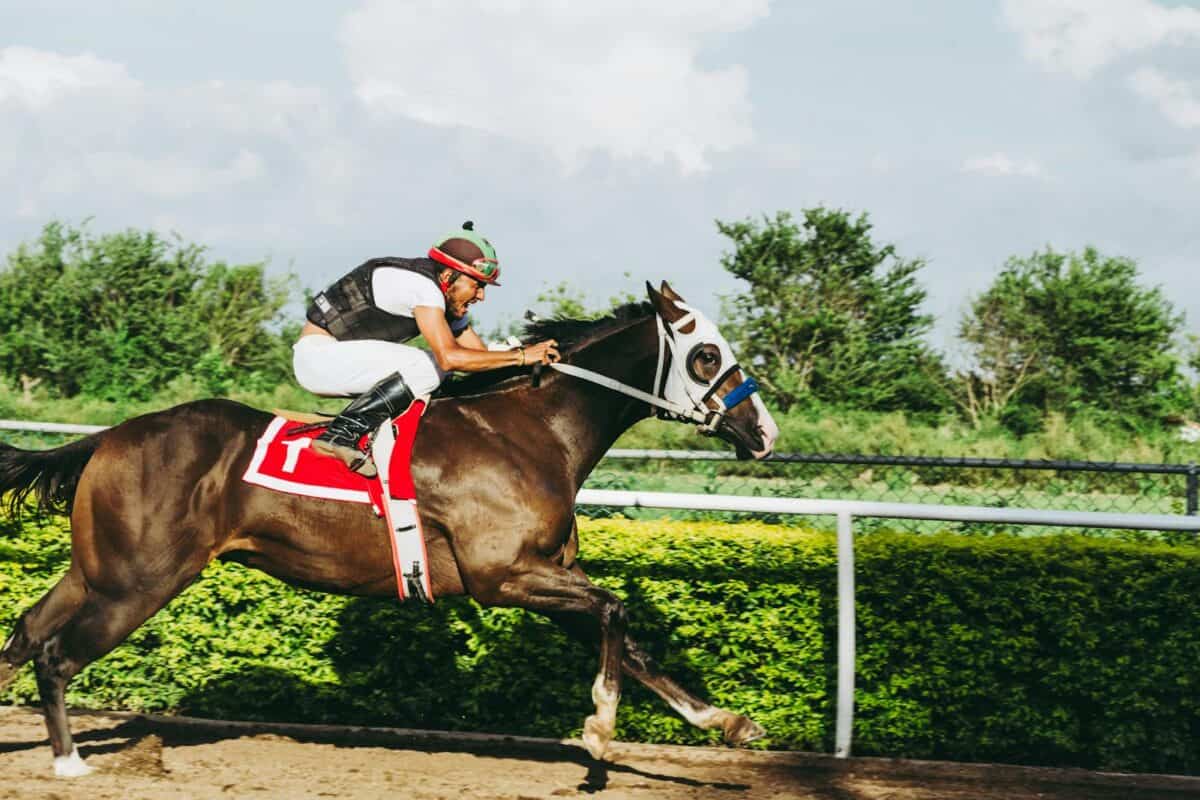
The Thoroughbred’s dominance in the Kentucky Derby and similar prestigious racing events represents the culmination of centuries of purposeful human selection combined with the breed’s inherent athletic capabilities. Their superior genetics, optimized physiology, ideal conformation, and competitive temperament create a racing athlete unmatched in the equine world. The extensive economic and regulatory infrastructure supporting Thoroughbred racing further reinforces their position at the pinnacle of the sport, creating insurmountable advantages that effectively exclude other breeds from competition. While racing continues to evolve with changing societal values and technological advancements, the fundamental attributes that make Thoroughbreds exceptional racers remain unchanged. As the bugle calls and the gates open at Churchill Downs each first Saturday in May, we witness not just a horse race but the demonstration of one of humanity’s most successful selective breeding programs—the creation of the ultimate equine athlete perfectly designed for the very task it performs.
- How Penguins Take Turns at Sea and Nest to Raise Chicks - August 9, 2025
- Dolphin Brains Compare to Those of Apes and Humans - August 9, 2025
- 14 Cutting-Edge Biotech Innovations That Will Shape the Future - August 9, 2025

